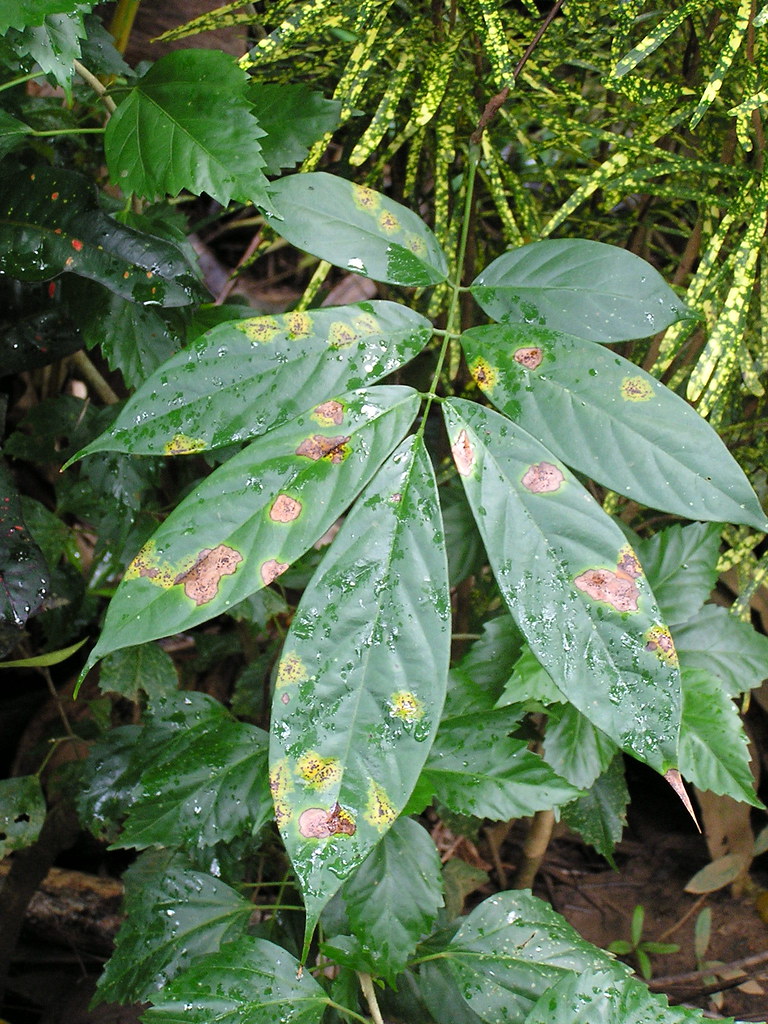
Angular leaf spot
Xanthamonas fragariae
Also Known As - Leaf spot AngularWhat is an Angular leaf spot (Xanthomonas fragariae)?
Angular leaf spot, caused by Xanthomonas fragariae, is a bacterial disease affecting strawberries. It is distributed worldwide, with specific significance in the nursery industry due to export regulations. Symptoms include small water-soaked spots on leaves and calyxes, which enlarge into translucent angular lesions delineated by veins. In high humidity, bacterial exudates create a whitish, scaly film. Lesions progress to reddish-brown necrotic spots on the upper leaf surface, often with a chlorotic halo. The disease rarely impacts fruit yields but poses a threat to nurseries. Vascular collapse and blossom blight can also occur in severe cases.
How does an Angular leaf spot (Xanthomonas fragariae) occur?
It reproduces and spreads primarily through infected plant material and water dispersion. The primary inoculum comes from infected nursery transplants or dried plant tissue. The bacterium can survive on non-plant surfaces and persists on host plant debris in the soil. Secondary spread occurs through splashing rain or overhead irrigation, which disperses bacterial cells. The disease can also be mechanically spread through harvesting and maintenance procedures. Under favorable conditions, the bacterium multiplies and infects new plant tissues, continuing the reproductive cycle.
Symptoms
1 - Effects on Plants
• Angular leaf spot caused by Xanthomonas fragariae can lead to reduced vigor, defoliation, and yield losses in strawberry plants. Severe infections can cause calyx death and plant mortality. • The disease has economic implications in the nursery industry and can affect the sustainability of strawberry production by impacting plant health, productivity, and market value.
Solutions
1 - Preventive Measures
• Plant certified disease-free nursery stock. • Avoid using infected plant material or transplants. • Implement proper sanitation practices to remove and destroy infected plant debris. • Use drip irrigation instead of overhead irrigation to minimize water dispersal of bacteria. • Practice crop rotation to reduce pathogen buildup in the soil.
2 - Integrated Disease Management
• Plant resistant cultivars when available. • Monitor and scout fields regularly for early detection and prompt action. • Remove and destroy infected plants or plant parts to prevent further spread. • Maintain proper plant nutrition and optimize growing conditions to enhance plant health and resistance. • Consult with local agricultural extension services or experts for region-specific recommendations.
3 - Chemical Control
• Apply copper-based fungicides or bactericides according to label instructions during periods of disease susceptibility. • Use antibiotics, such as streptomycin or oxytetracycline, as recommended and within legal guidelines. • Apply preventive sprays during periods of high disease pressure. Note: Always follow the instructions and guidelines provided by local authorities, regulatory agencies, and product labels when using any chemical control methods.
